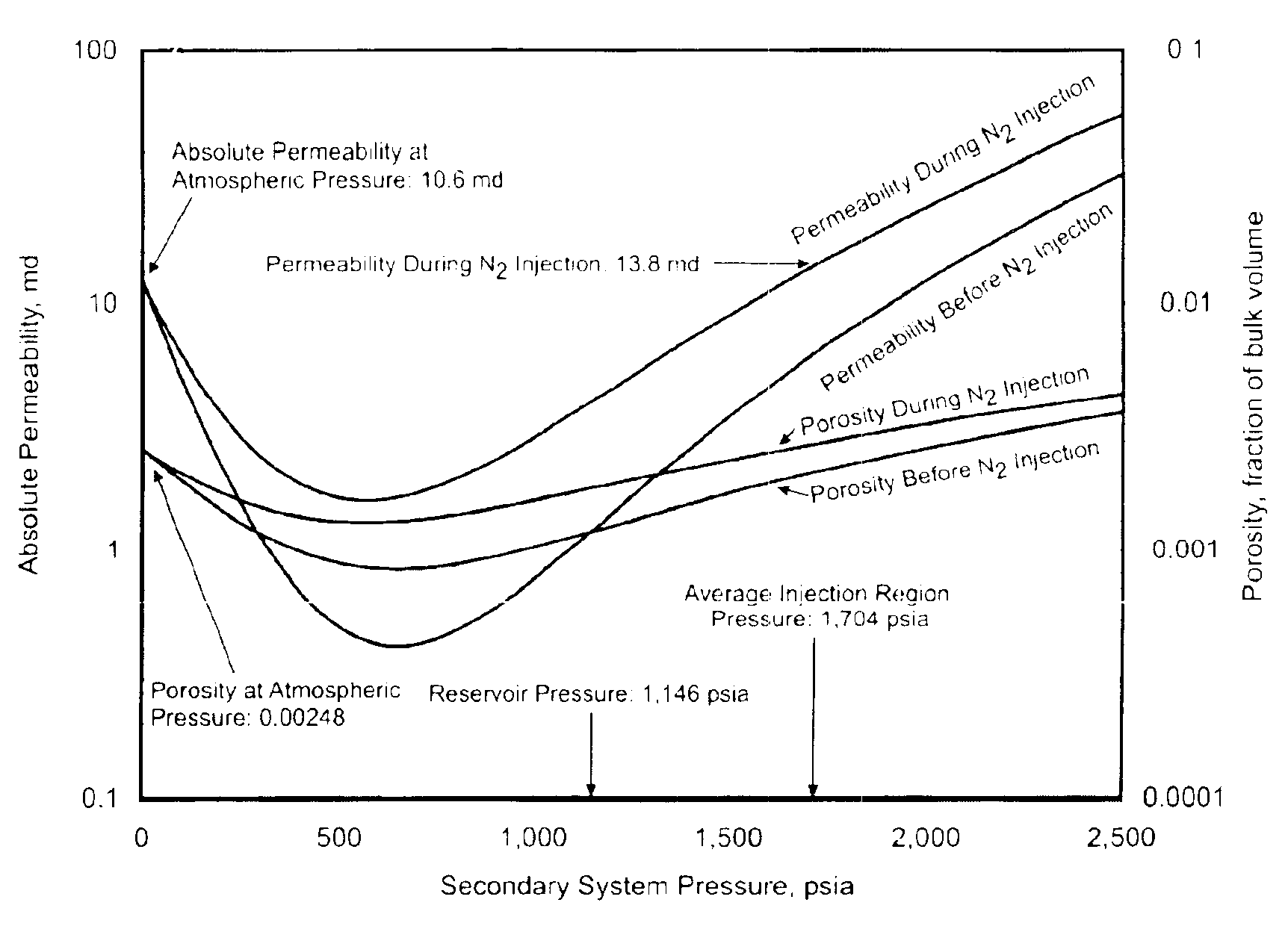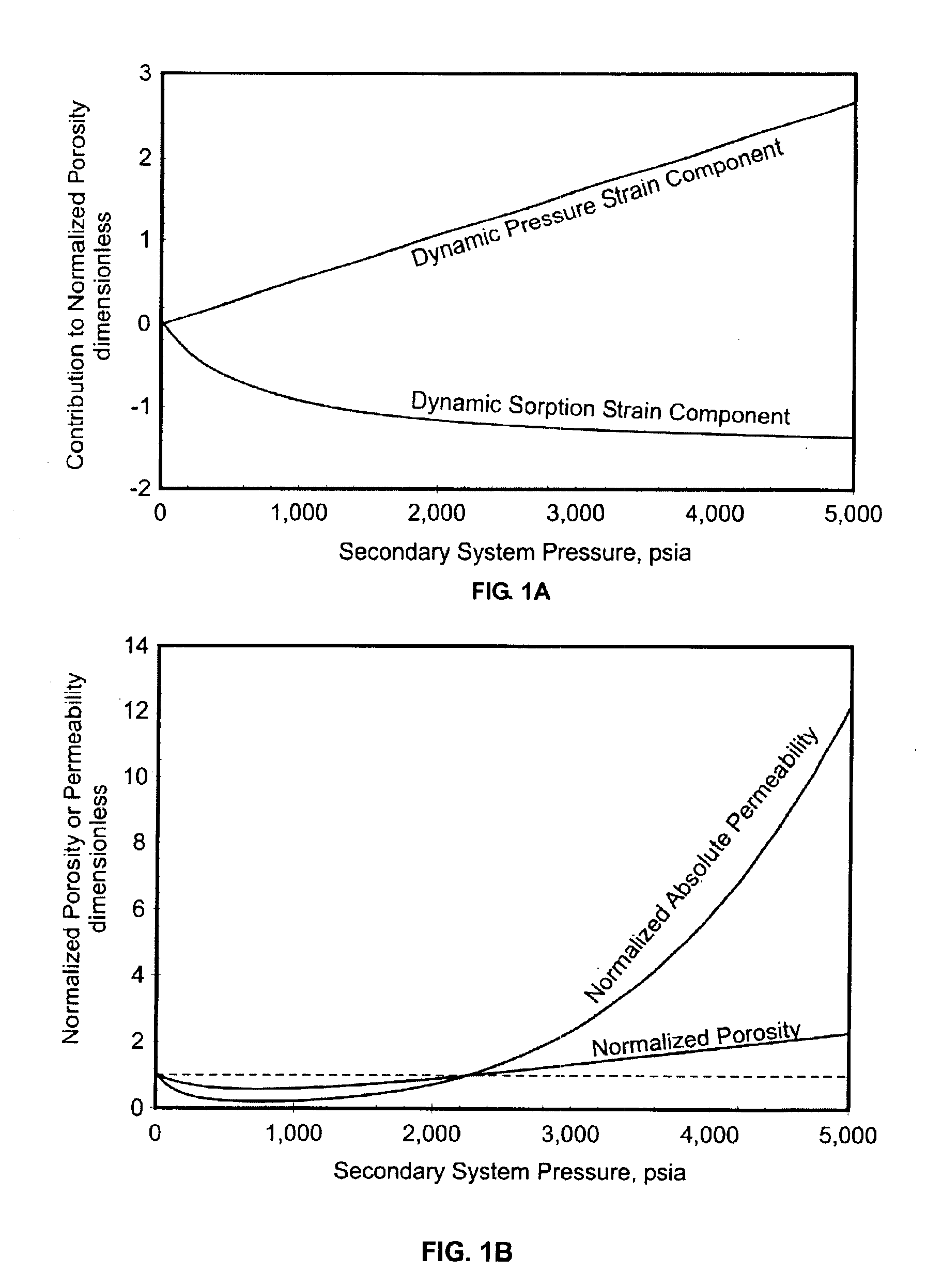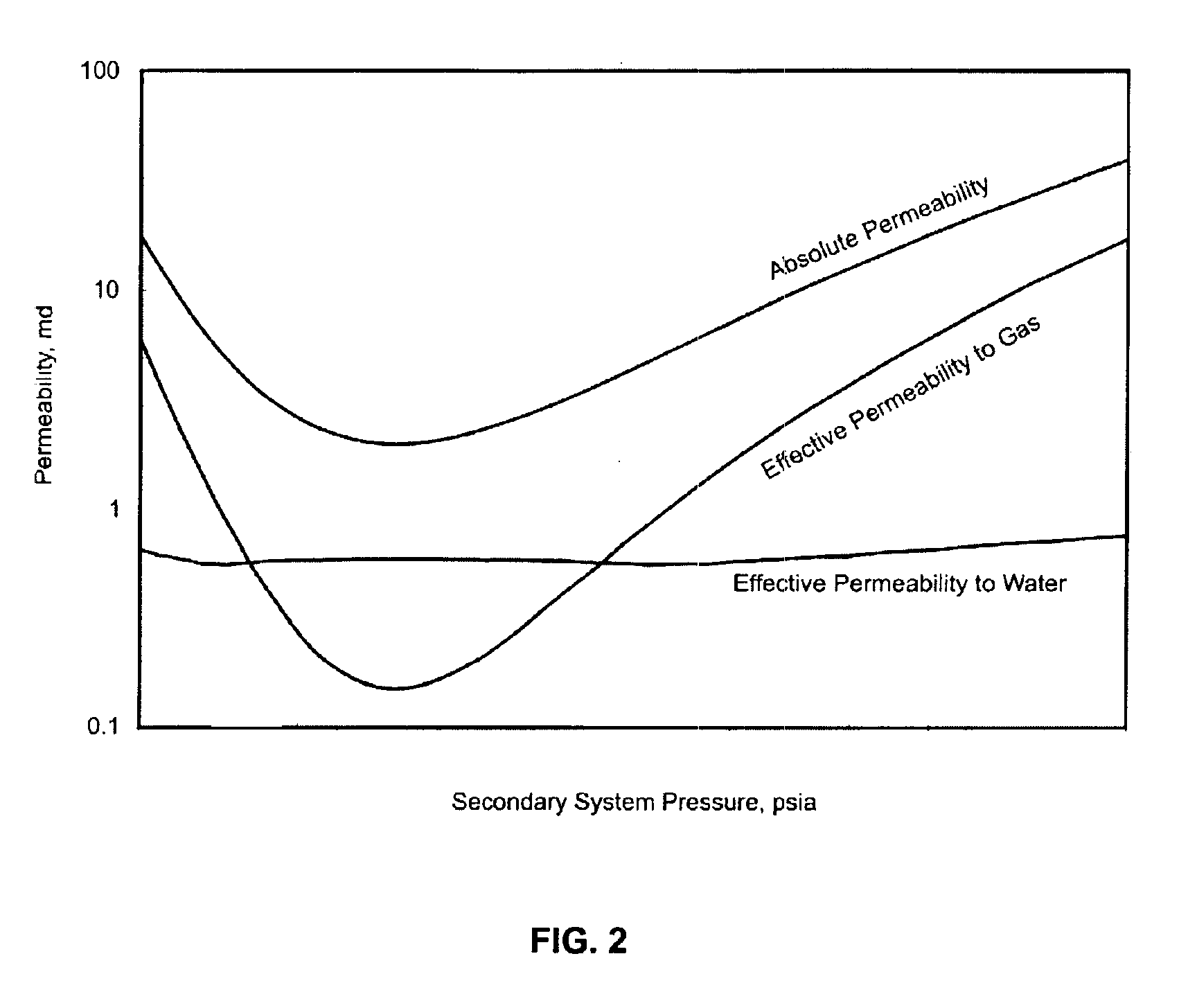Process for predicting porosity and permeability of a coal bed
a technology of porosity and permeability, which is applied in the field of coal bed porosity and permeability prediction, can solve the problems of low permeability reservoirs that are unlikely to produce cbm at commercial rates without some form of enhanced recovery, the volume of cbm remaining after primary production, especially in moderate and low permeability reservoirs, is significant, and the sag is typically trapped in-situ
- Summary
- Abstract
- Description
- Claims
- Application Information
AI Technical Summary
Benefits of technology
Problems solved by technology
Method used
Image
Examples
example 1
Example 1 illustrates how the inventors' model described in Equation (1) can be calibrated. However, it should be noted that the data were collected before the inventors' model and method were developed. Accordingly, this example is not the most preferred method for calibrating the inventors' model. But, even though the data was not collected by the preferred method, Example 1 illustrates how even less than preferred information can be used successfully to predict permeability and porosity changes.
Well test data was collected from two wells located near the town of Big Valley, Alberta, Canada. Both wells in this example were completed in an Upper Medicine River Coal seam located in the Mannville Formation at depths between 4,117 ft. and 4,130 ft. below the surface. The first well was used to calibrate the dynamic multicomponent sorption strain component of the model. The second well was used to calibrate the dynamic pressure strain component of the model.
First Well (FBV 4A)
The first...
example 2
Example 2 illustrates how the inventors' model can be used to predict injection rates for a desired fluid composition. After the N2 injection test was completed in the FBV 5 well, a simulated flue gas injection test was required. During this test a 50% CO2-50% N2 mixture was planned to be injected at pressures up to 2,500 psia. Accordingly, an estimate of the maximum possible injection rate was required.
From experience, it was known that the in-situ gas composition after injection would not be the same as the injected gas composition because CBM would be desorbed and mixed with the injected gases. Also, SAG would be sorbed in the coal matrix. Therefore, for the purposes of design, the free gas composition after injection was assumed to be approximately 45 mol. % CH4, 45 mol. % CO2, and 10 mol. % N2.
Based on the expected free gas composition, the sorbed gas composition was computed using Equations (17), (18), and (19) to be 16.4 mol. % CH4, 83.0 mol. % CO2, and 0.6 mol. % N2. For thi...
example 3
This example demonstrates the sensitivity of the inventors' model to rock mechanical properties. Specifically, this example shows the effect of changing values for rock mechanical properties on the φatm and ka-atm values determined in Example 1. As demonstrated below, accuracy in predicting φ and ka using the inventors' model is improved with more accurate rock mechanical property values. Accordingly, rock mechanical properties are preferably determined from water injection test data.
As discussed in Example 1, the inventors used data measured during a water injection test to calibrate for M. A value for ν based on San Juan Basin coal samples (Mavor et al., SPE 39105, ibid) was used to estimate a value for Young's modulus, E. Accordingly, the values used in calibrating the model in Example 1 were 353,210 psi for E, 0.21 for ν, 397,600 for M and 202,994 psi for the bulk modulus, K.
In contrast, Palmer and Mansoori (“P&M,” SPE 36737 and SPE 52607, ibid) reported that E can range from 12...
PUM
 Login to View More
Login to View More Abstract
Description
Claims
Application Information
 Login to View More
Login to View More - R&D
- Intellectual Property
- Life Sciences
- Materials
- Tech Scout
- Unparalleled Data Quality
- Higher Quality Content
- 60% Fewer Hallucinations
Browse by: Latest US Patents, China's latest patents, Technical Efficacy Thesaurus, Application Domain, Technology Topic, Popular Technical Reports.
© 2025 PatSnap. All rights reserved.Legal|Privacy policy|Modern Slavery Act Transparency Statement|Sitemap|About US| Contact US: help@patsnap.com



